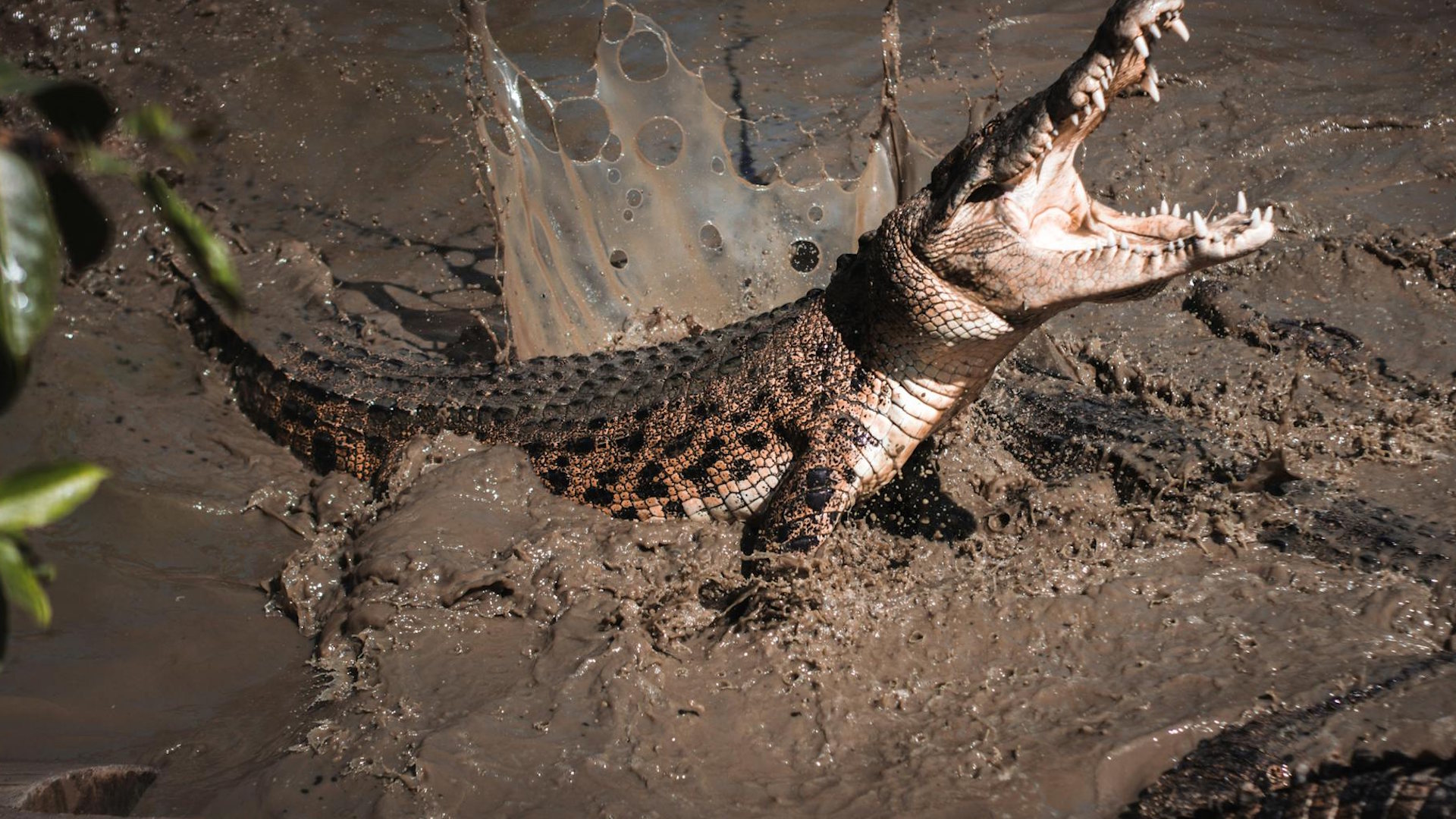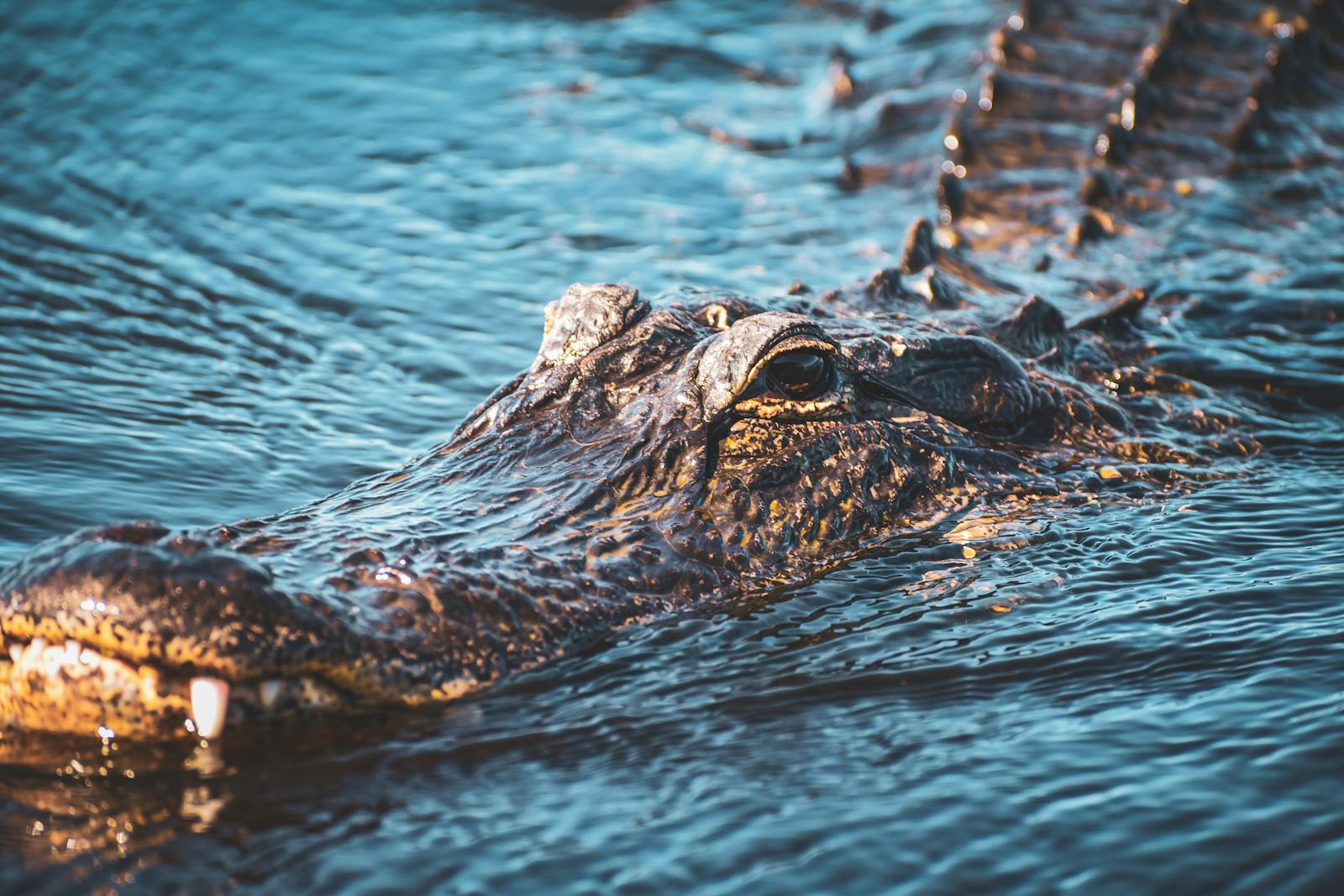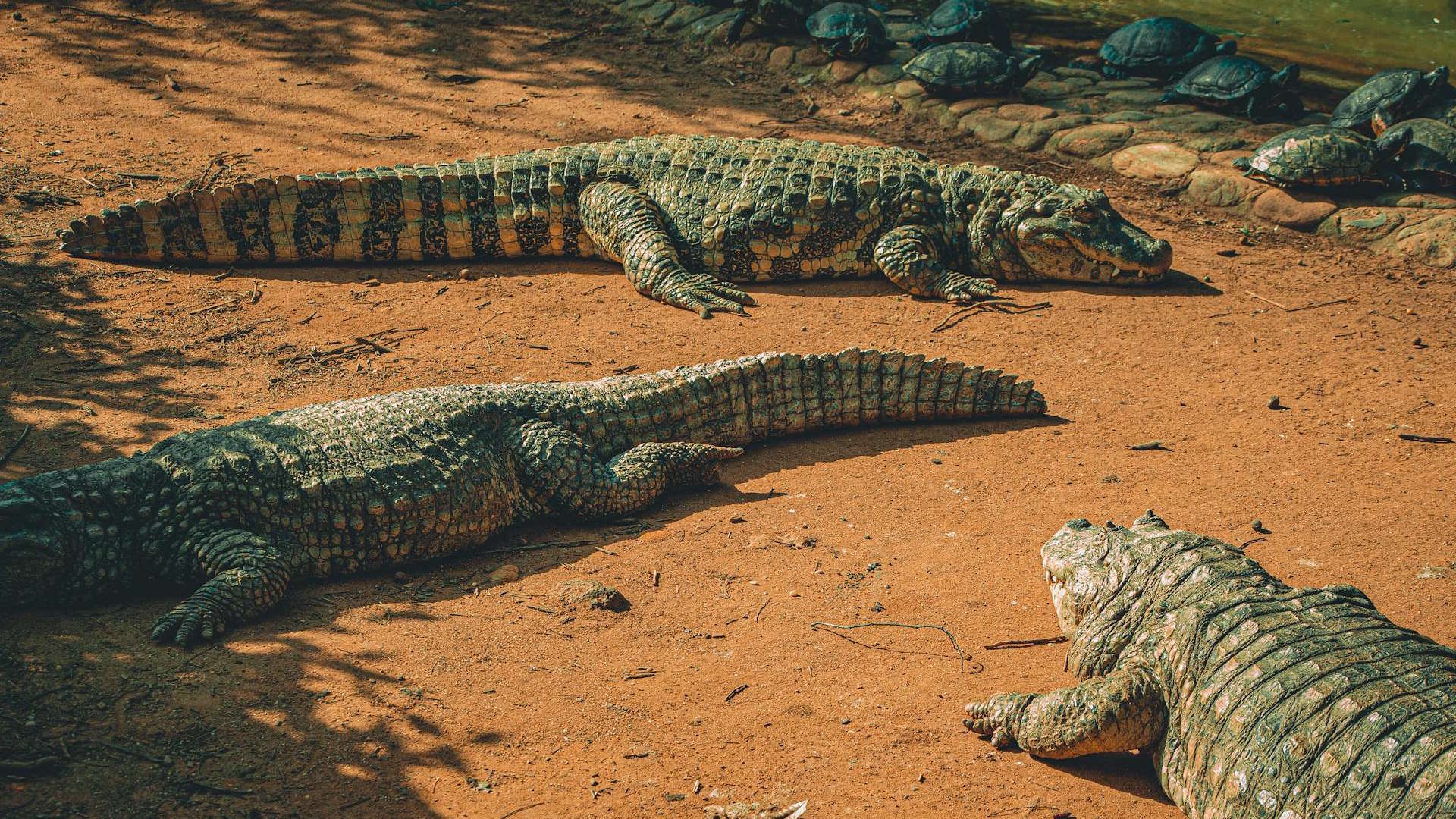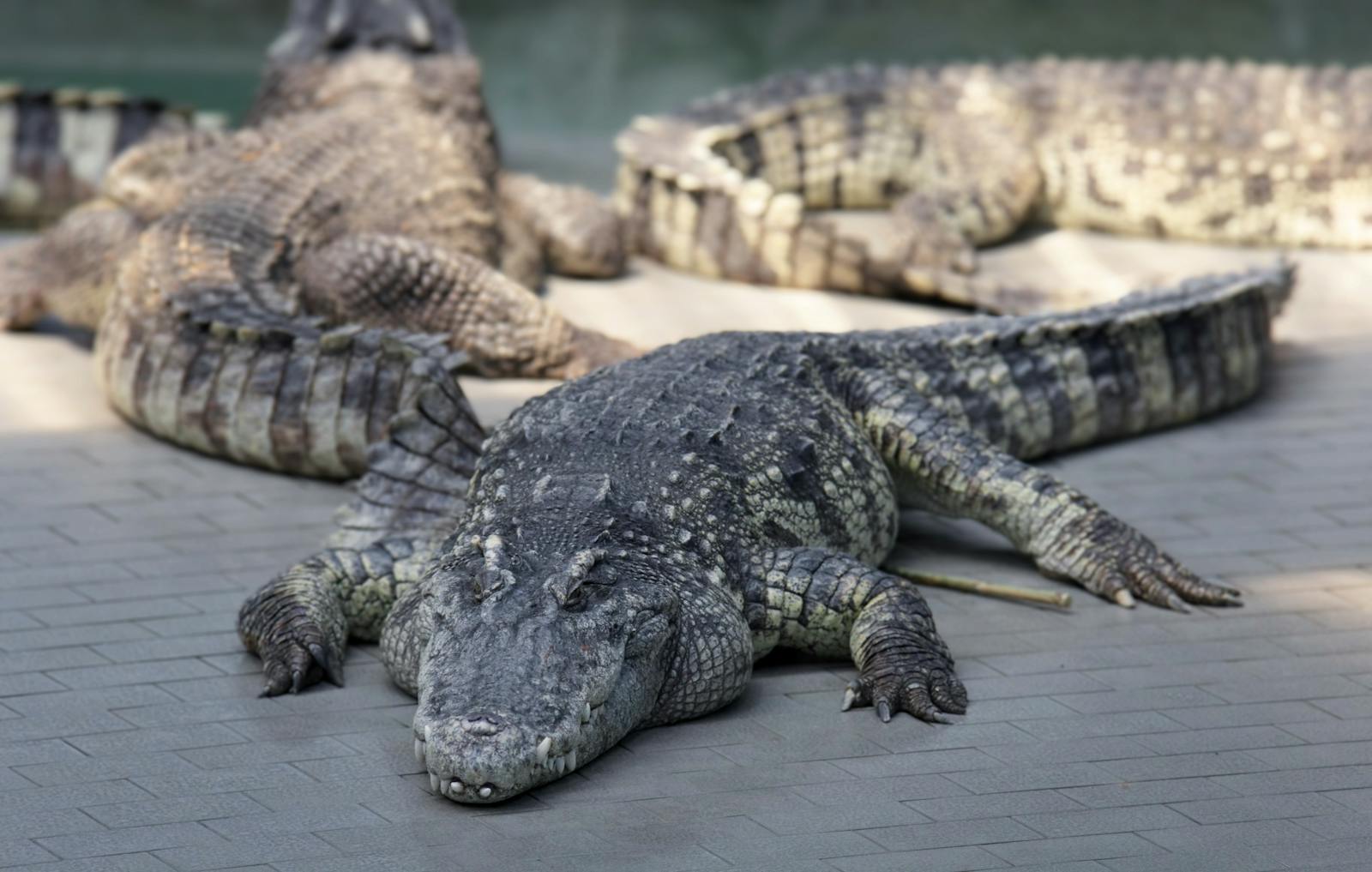Alligators and crocodiles stand among nature’s most impressive survivors, having outlasted the dinosaurs and thrived for over 200 million years. These living fossils have mastered the art of endurance in some of Earth’s most challenging environments, from scorching deserts to freezing temperatures.
Their remarkable adaptations allow them to withstand conditions that would prove fatal to most other creatures. Through specialized physiological features, behavioral adaptations, and evolutionary advantages, these ancient reptiles demonstrate nature’s incredible engineering.
This article explores the fascinating mechanisms that enable crocodilians to survive and thrive in extreme conditions that have challenged countless other species into extinction.
Anatomical Masterpieces: Built for Survival
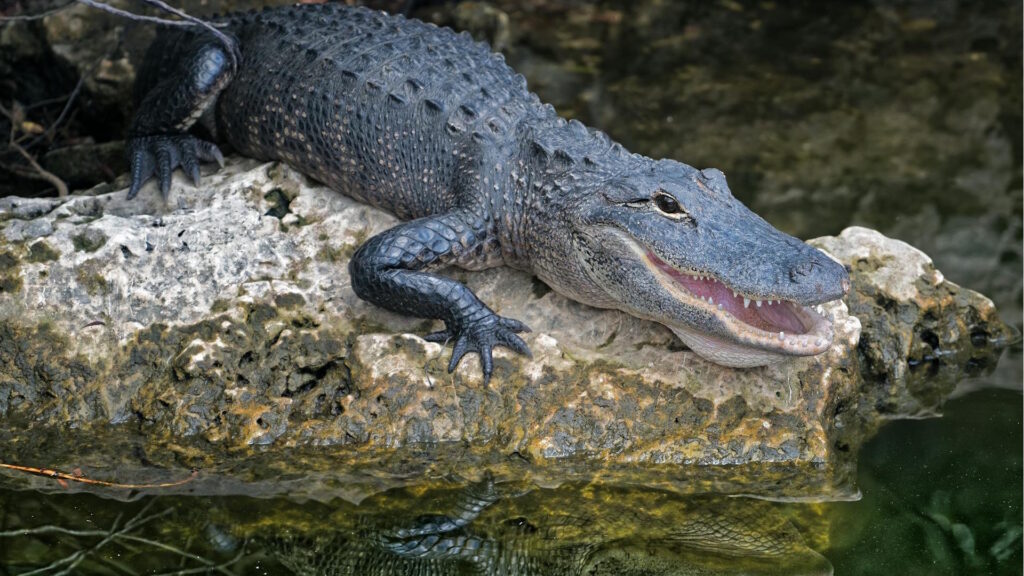
Crocodilians possess body structures perfectly engineered for their semi-aquatic lifestyles and harsh environmental challenges. Their muscular bodies, armored with osteoderms (bony plates beneath their scales), provide protection against predators and environmental hazards. The iconic elongated snouts house pressure sensors that can detect minute water movements, allowing them to hunt effectively even in murky waters with near-zero visibility.
Their eyes, ears, and nostrils are positioned on top of their heads, enabling them to remain almost completely submerged while still observing their surroundings. This evolutionary design allows them to ambush prey while staying hidden and protected in water, demonstrating how their very anatomy serves as a survival tool in challenging environments.
Temperature Regulation: Masters of Thermoregulation
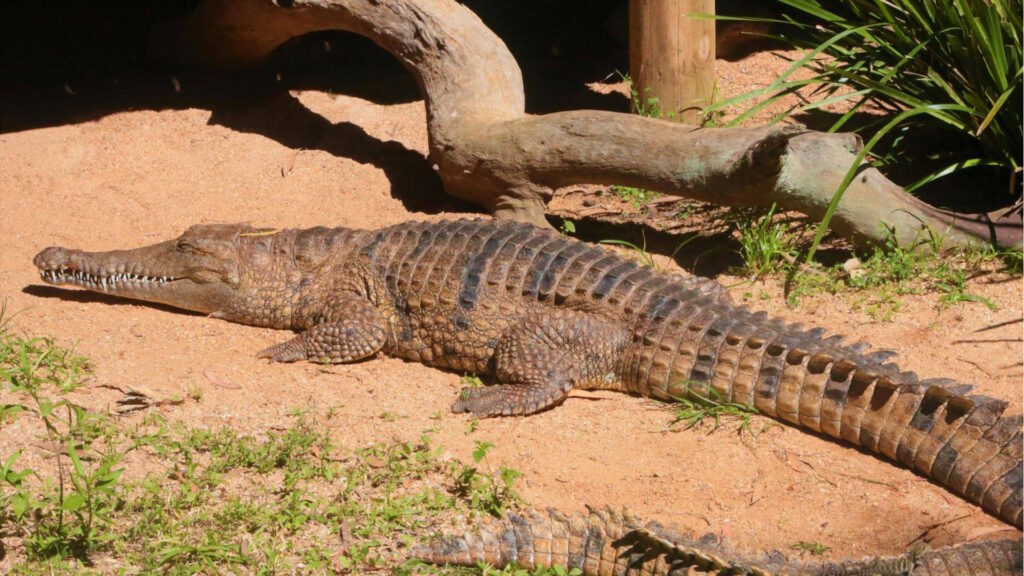
Unlike mammals, alligators and crocodiles are ectothermic, meaning they rely on external heat sources to regulate their body temperature. This adaptation proves remarkably efficient in extreme environments, as it requires significantly less energy than maintaining a constant internal temperature.
When temperatures rise, these reptiles open their mouths in a behavior called “gaping,” which releases heat and cools their bodies. During excessive heat, they seek shade or submerge themselves in water to prevent overheating.
Conversely, in cooler weather, they bask in the sun to warm up, often adjusting their body position to maximize sun exposure. This sophisticated thermoregulation strategy allows them to survive in environments with dramatic temperature fluctuations while conserving precious energy.
Metabolic Marvels: Energy Conservation Specialists

One of the most remarkable adaptations of crocodilians is their extraordinarily efficient metabolism, which helps them survive in conditions of scarcity. Their specialized cardiovascular system allows them to direct blood flow away from less critical organs during times of stress or food shortage.
An alligator can survive on as little as 10-15 large meals per year, converting nearly 70% of consumed food into body mass—a conversion rate far more efficient than mammals achieve. They possess a four-chambered heart that can switch to a three-chambered configuration when underwater, allowing them to hold their breath for up to two hours during a single dive.
This metabolic flexibility enables them to endure extended periods without food, sometimes surviving for months or even over a year without eating when necessary.
Drought Survival: Waiting Out Harsh Conditions
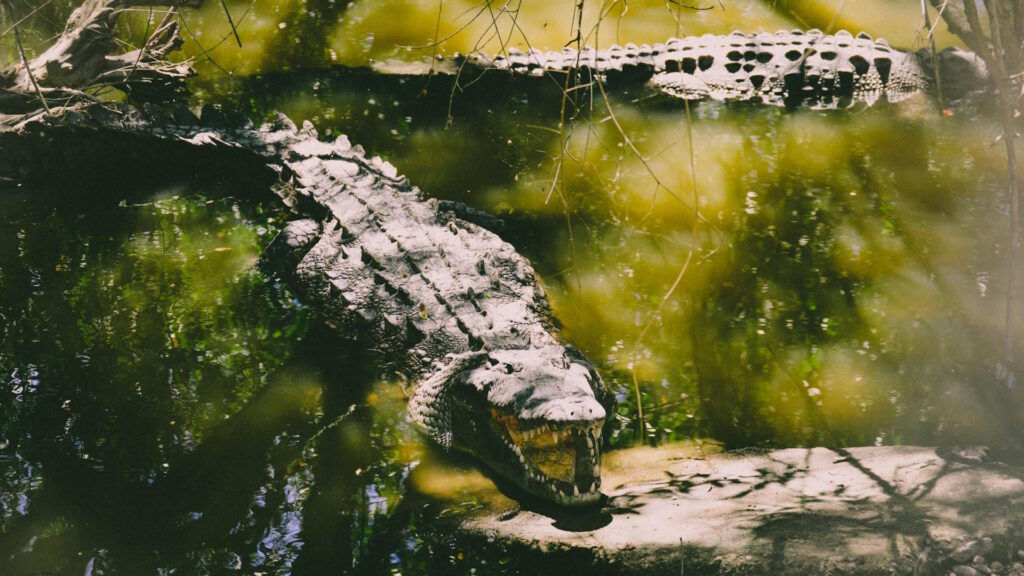
When faced with drought conditions, alligators and crocodiles employ impressive survival strategies that showcase their adaptability. They create “gator holes,” depressions in dry terrain that collect water and serve as oases not only for themselves but for other wildlife.
During extreme dry periods, some species can enter a state of aestivation, a dormancy period similar to hibernation, where their metabolism slows dramatically to conserve energy and water.
Nile crocodiles in Africa have been documented surviving in dried river beds, buried in mud for months, emerging only when rains return. Australian freshwater crocodiles can lose up to half their body weight during extreme drought and still recover when conditions improve, demonstrating remarkable physiological resilience in the face of water scarcity.
Cold Weather Tactics: Surviving the Freeze

While often associated with tropical environments, American alligators have adapted to survive in surprisingly cold conditions. In a behavior known as “brumation,” they can endure freezing temperatures by slowing their metabolism to a near standstill.
Perhaps most astonishing is the “snorkeling” behavior observed in American alligators, where they keep just their nostrils above water as the surface freezes around them. This creates a breathing hole in otherwise frozen water bodies, allowing them to survive beneath the ice.
Their bodies enter a state of dormancy where heart rate and respiration drastically decrease, allowing them to wait out cold periods that would kill many other reptiles. Some alligators have been documented surviving in water that partially froze around their bodies, demonstrating their remarkable cold-tolerance capabilities.
Breathing Adaptations: Respiratory Efficiency

Crocodilians possess sophisticated respiratory systems that contribute significantly to their survival abilities. Their lungs contain multiple chambers and air sacs that allow for more efficient oxygen extraction than most other reptiles.
A specialized diaphragm-like muscle called the diaphragmaticus helps them breathe even when most of their body is submerged. Their nostrils can seal tightly underwater, and a special palatal valve at the back of the throat prevents water from entering their lungs when their mouths are open underwater—crucial for catching prey without drowning.
This respiratory efficiency enables them to remain underwater for extended periods while hunting or avoiding threats, and to survive in low-oxygen environments that would prove fatal to many other species.
Salt Gland Adaptations: Conquering Saline Environments

Saltwater crocodiles have developed specialized salt glands that allow them to thrive in marine environments that would be toxic to most freshwater animals. Located on their tongues, these glands excrete excess salt, enabling saltwater crocodiles to inhabit coastal areas, mangrove swamps, and even open ocean.
This adaptation has helped species like the saltwater crocodile become the most widely distributed of all crocodilians, found across vast areas from India to Australia. American crocodiles also possess these glands, albeit less developed, allowing them to tolerate brackish environments.
This salt-processing capability represents a crucial evolutionary advantage that has allowed certain crocodilians to exploit niches unavailable to other freshwater predators, expanding their range across challenging saline habitats.
Sensory Superpowers: Hunting in Challenging Conditions

Crocodilians possess extraordinary sensory adaptations that enable them to hunt effectively in difficult conditions. Their skin contains tiny sensory organs called integumentary sense organs (ISOs) that can detect minute changes in water pressure, allowing them to locate prey even in complete darkness or murky water.
Their night vision exceeds that of most mammals thanks to a specialized layer behind the retina called the tapetum lucidum, which reflects light back through the retina for improved low-light vision. Additionally, their hearing is remarkably acute, with ears that close underwater but can detect subtle vibrations through specialized jaw receptors.
These sensory advantages allow them to remain apex predators even in environments with poor visibility, extreme darkness, or other challenging conditions where other predators might struggle to locate prey.
Reproductive Resilience: Ensuring Future Generations

The reproductive strategies of alligators and crocodiles have evolved to maximize offspring survival in unpredictable environments. Unlike many reptiles that simply lay eggs and depart, crocodilian mothers guard their nests ferociously against predators.
They construct carefully designed nests of vegetation that generate heat through decomposition, helping to incubate eggs even when environmental temperatures fluctuate. Most remarkably, the sex of crocodilian offspring is determined not by genetics but by incubation temperature, a phenomenon called temperature-dependent sex determination.
This adaptation allows populations to naturally adjust male-to-female ratios based on environmental conditions, increasing reproductive success during challenging times. Some species, like the Nile crocodile, can delay egg-laying during drought conditions, waiting until environmental circumstances improve before reproducing.
Behavioral Adaptations: Strategic Responses to Environmental Stress

Crocodilians display sophisticated behavioral adaptations that enhance their survival in extreme conditions. During intense heat, they may dig burrows into riverbanks, creating cooler microenvironments that protect them from temperature extremes.
Many species demonstrate seasonal migrations, traveling considerable distances to find more favorable conditions when their primary habitat becomes too challenging. American alligators are known to travel between freshwater sources during drought periods, sometimes crossing substantial stretches of land to reach suitable water bodies.
Some crocodiles display remarkable learning abilities, remembering seasonal patterns and adjusting their behavior accordingly—returning to specific nesting sites when conditions are favorable or avoiding areas that have proven dangerous in the past. This behavioral plasticity allows them to respond effectively to environmental changes that might overwhelm less adaptable species.
Ancient Immunity: Disease Resistance in Contaminated Waters

One of the less obvious but equally important survival adaptations of crocodilians is their robust immune system, which allows them to thrive in bacteria-laden environments that would cause serious infections in other animals. Their blood contains powerful antimicrobial peptides that can fight off infections from severe wounds, enabling them to recover from serious injuries without antibiotics.
Research has shown that alligator blood serum can kill a wide range of bacteria, including drug-resistant strains that pose serious threats to humans. This immune resilience allows them to inhabit stagnant, microbe-rich waters that would be deadly to many other species.
Their remarkable healing abilities complement this immune strength, with evidence suggesting they can recover from massive wounds that would be fatal to most vertebrates, further enhancing their survival capabilities in challenging conditions.
Evolutionary Persistence: Surviving Mass Extinctions

Perhaps the most impressive testament to crocodilian survival abilities is their evolutionary longevity—having persisted through multiple mass extinction events, including the Cretaceous-Paleogene extinction that wiped out the dinosaurs. Their basic body plan has remained largely unchanged for over 200 million years, suggesting they achieved an optimal design for survival early in their evolution.
This evolutionary success can be attributed to their ability to survive on minimal resources during extended periods of environmental stress. Their semi-aquatic lifestyle provides a buffer against many terrestrial disturbances, while their ability to remain dormant during unfavorable conditions allows them to essentially “wait out” catastrophic events.
Their remarkable adaptability across varying habitats—from tropical to temperate regions—has ensured that even when one population faces extreme challenges, others can persist, making crocodilians one of evolution’s greatest success stories.
Conclusion

Alligators and crocodiles represent nature’s ultimate survivors, equipped with an extraordinary arsenal of adaptations that have allowed them to persist where countless other species have failed. From their efficient metabolisms and temperature regulation strategies to their remarkable respiratory systems and immune capabilities, these ancient reptiles demonstrate what 200 million years of evolutionary refinement can achieve.
Their ability to endure extreme heat, cold, drought, and even long periods without food showcases biological engineering at its finest. As our planet faces increasing environmental challenges and climate shifts, these remarkable creatures offer valuable insights into resilience and adaptation.
The survival story of crocodilians isn’t merely a testament to their impressive biology—it’s a powerful reminder of nature’s ingenuity and the extraordinary lengths to which life can adapt to overcome even the most extreme conditions on Earth.

